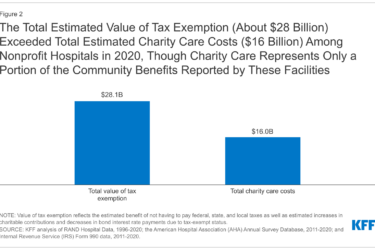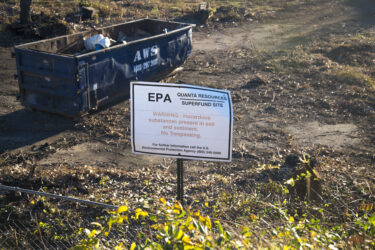By Brenda Goodman
Cost is an important aspect of covering research, especially if you’re covering a study of a drug or medical device. But pricing information can also be tough to find, especially if you’re on a tight deadline. Here are some resources for finding information on costs:
Drug Costs
IMS Health. In their press room, reporters can find top-line industry data including breakdowns of the top 20 drugs in the U.S. and around the world. Their top-line charts have information on pharmaceutical markets by drug and by drug class. If you are looking for information on a drug that’s not included in the top 20, press officers can help via phone or email.
They don’t offer information on drug pricing, however.
For example: Looking at the top-line data, you could find out that Plavix was the second best-selling drug in the U.S. in 2011, with annual sales that year of $6.8 billion. You’d also see that sales of Plavix had increased by about 75 percent since 2011. You would not be able to find out how much a 30-day supply of the drug cost.
Medicare publishes price information for certain drugs that are covered under Part B. These are drugs that are administered in a doctor’s office, hospital, or clinic. They include things like chemotherapy drugs to treat cancer, infused drugs for osteoporosis, steroid injections for joint pain and vaccines. Every quarter, Medicare publishes the Average Sales Prices (ASP) of part B drugs as submitted by drug manufacturers. Medicare typically reimburses doctors for the ASP plus about 6 percent. You can find ASP information here.
DRX – formerly Destination RX—is a useful place to find individual drug prices. This company keeps tabs on the Average Wholesale Price (AWP) of prescription drugs. Their Drug Compare tool is used by AARP and by insurance companies to help consumers find and compare the cost of brand name and generic medications to other medications in the same drug class.
Be aware, though, AWP is not the cost to consumers. In the pharmaceutical industry, it’s said that AWP stands for “Ain’t What’s Paid.” That’s because AWP is the price a drug company changes health plans to purchase their medications. It’s a number that’s often inflated relative to the price that pharmacies actually pay for the drugs.
Other drug prices reported to data companies include the Wholesale Acquisition Cost (WAC), which is the price pharmaceutical manufacturers charge wholesalers and chain warehouses. These chain warehouses then mark up the price a bit before selling the medication to pharmacies.
“What people pay is a real mystery,” says Russell LaMontagne, of the Corinth Group, a firm that has handled media relations for DRX.
The most accurate way to find pricing information on a drug may just be to call some pharmacies around your city or around the nation, depending on your audience. You’ll need dosage information (how much, how often) to get comparable prices. Of course, the prices they give you won’t apply to people who have drug benefits through their insurance plans.
Drug Manufacturers – When drug companies get FDA approval for a new drug, they will often announce the drug’s Wholesale Acquisition Cost. Before approval, however, companies are typically tight-lipped about price.
Before a drug is approved, market analysts are hard at work trying to figure out how much money the drug might make. Their projections are often reported in industry websites like Fierce Biotech.
Medical Tests
HealthCare Blue Book is a site that advises consumers on the “fair price” they should pay for a given test or procedure, like MRIs and colonoscopies.
The idea is to help patients negotiate lower costs for their care, the same way insurance companies do. Because the goal is to get costs down to this price, it’s going to be lower than the “sticker price” clinics or hospitals quote for their services.
According to CEO Jeffery J. Rice, M.D., J.D., the way the site works is that health insurance companies give them access to the negotiated prices they’ve paid for a given test or procedure across a range of providers in a given geographic area. The website then picks a price in the mid- to lower-range of those negotiated rates to arrive at the “fair price.”
While consumers (and reporters) and search for free, the site makes money by charging corporate clients who subscribe to the service for employees. Paying clients get to see the range of prices paid in their area, not just the fair price, and they get to see which providers charged the lowest negotiated rates.
Rice says he helps reporters with same-day requests for more detailed pricing information on medical tests and procedures “all the time.” You can reach them through the contacts on their media page.
Medical Devices
Finding the cost of medical devices can be a challenge. A recent GAO report (PDF) found that hospitals sometimes sign agreements with device manufacturers that keep them from being able disclose how much they pay for medical devices to third parties, including doctors and patients.
Another problem is that the price of medical devices varies greatly because device manufacturers often charge wildly different prices for the same device sold to different hospitals.
Two ideas for tracking down device costs: Contact the manufacturer’s press office for help. Or try PubMed. Cost-effectiveness studies are becoming more common, and those will sometimes report the average cost of a procedure or medical device, like a knee replacement.
Nutrition Trends
Mintel is a market research firm that specializes in lifestyle trends, including information on food and beverage markets. They don’t release full market reports, but they will help reporters on deadline who are looking for specific information. They say they’re usually able to handle same-day requests.
For example: A recent press release reveals that despite calls for Americans to reduce sodium in their diets, the number of new products launched with low or no sodium claims actually declined from 2010 to 2011.
DataMonitor is a U.K.-based market research company that helps reporters with information on nine markets: Automotive, Consumer Packaged Goods, Energy & Sustainability, Financial Services, Logistics & Express, Pharmaceutical & Healthcare, Retail, Technology and Telecoms. You can access their media center here.
Brenda Goodman, AHCJ’s topic leader on covering medical studies, has been a health and science reporter for 15 years across a variety of platforms. Her work has appeared in Scientific American, The New York Times, Psychology Today, Self, Health, Parade and The Boston Globe. She is a regular news writer for WebMD.











